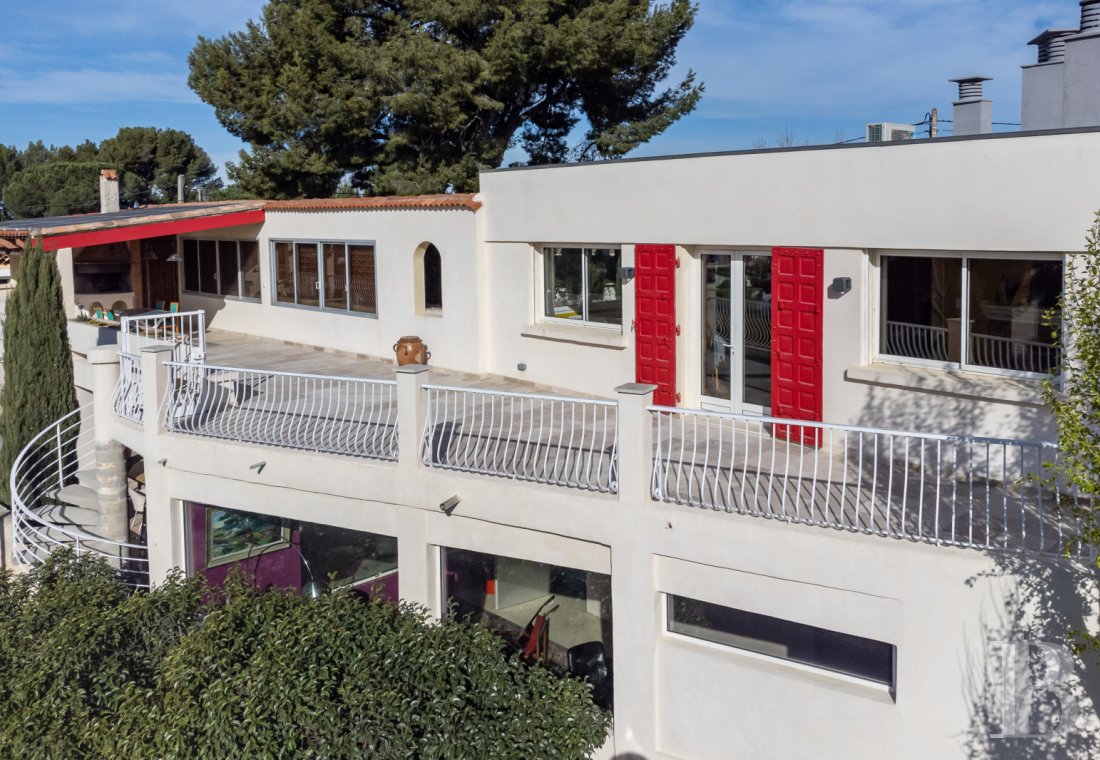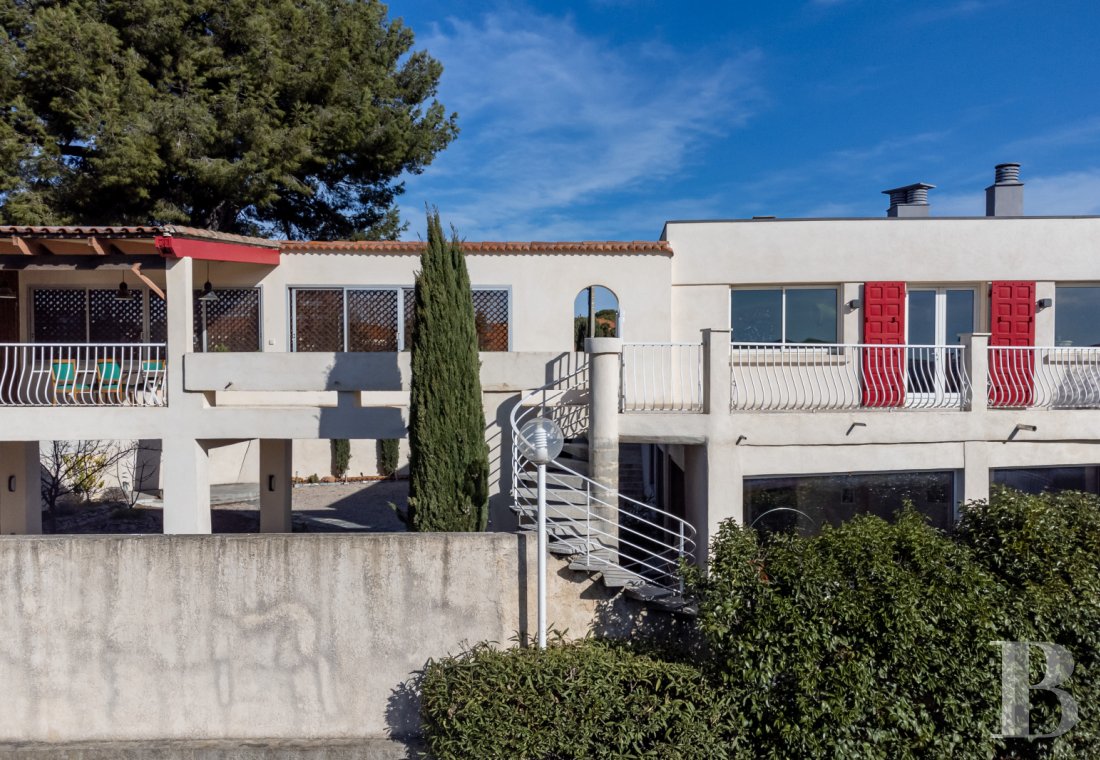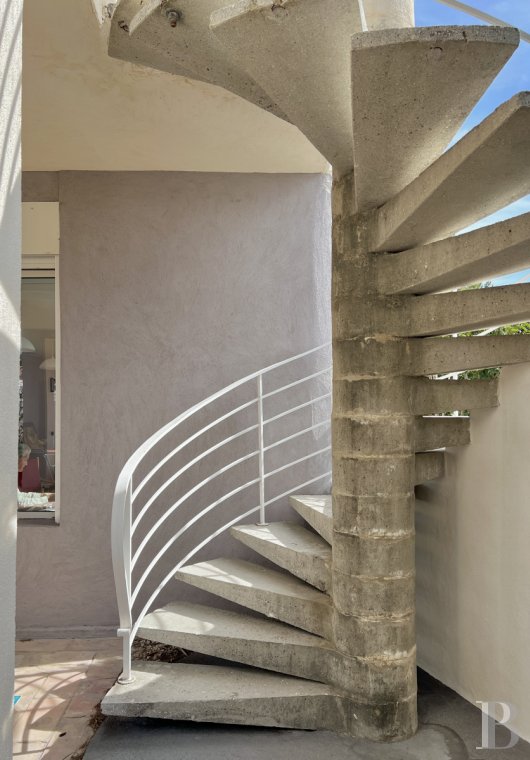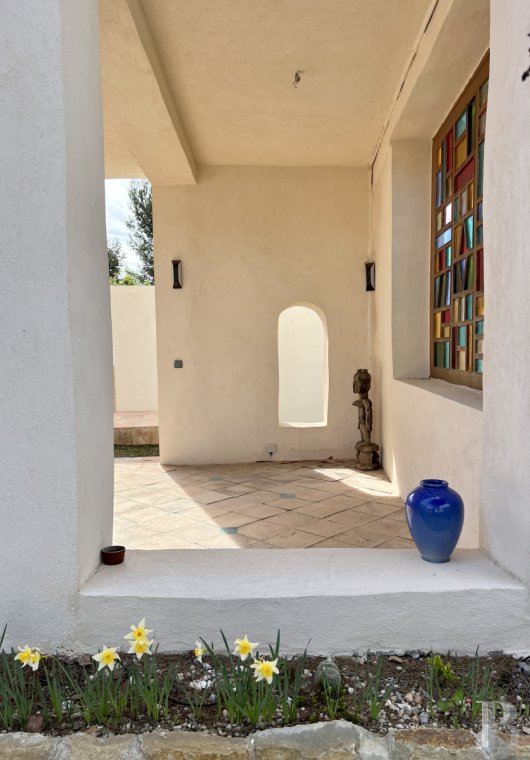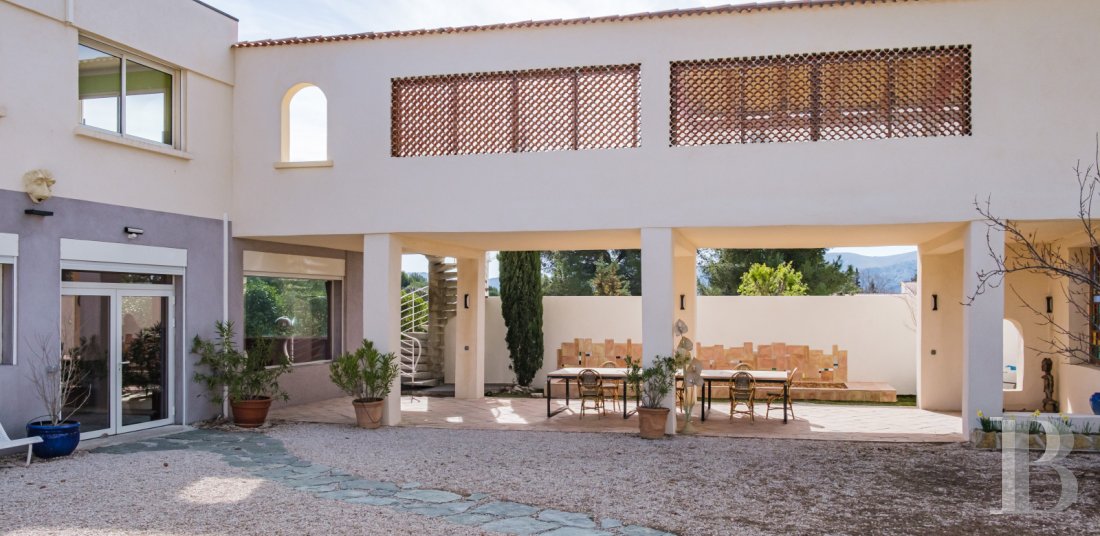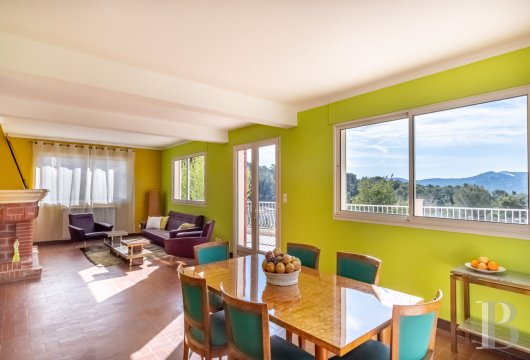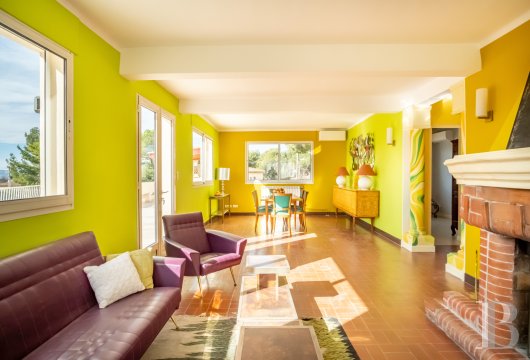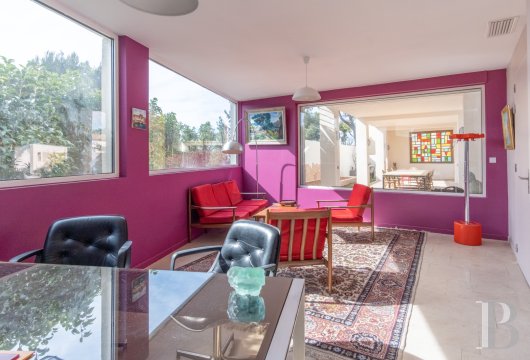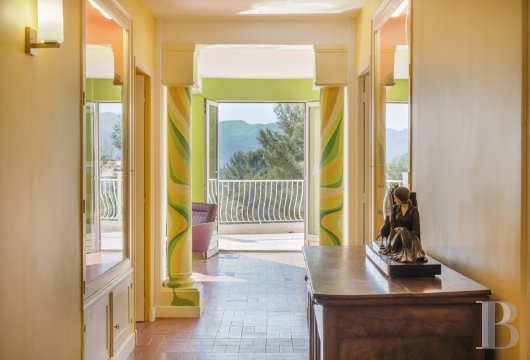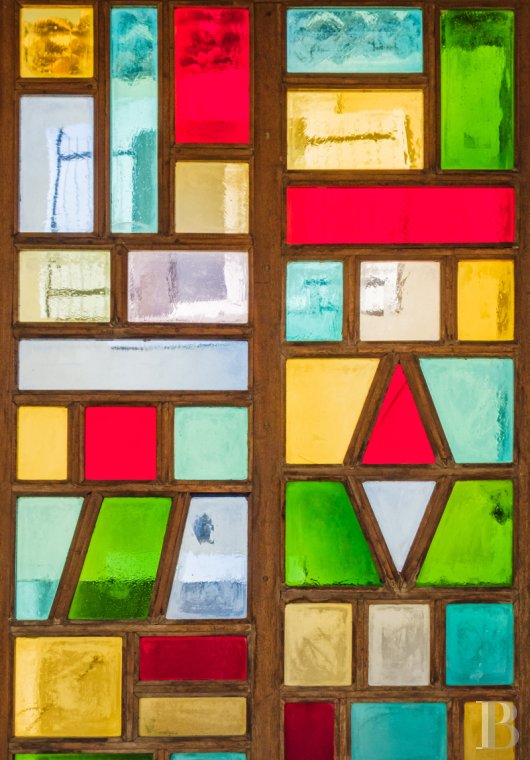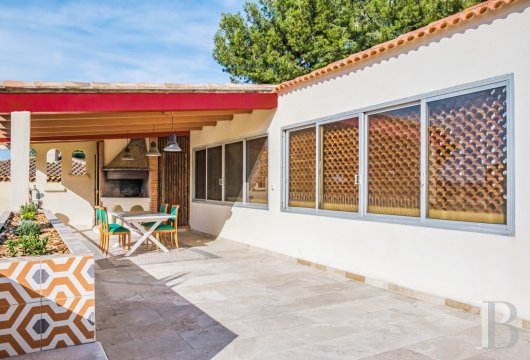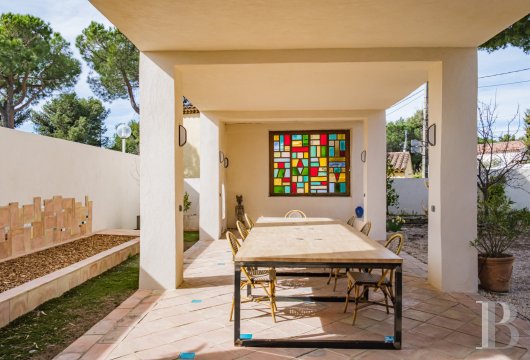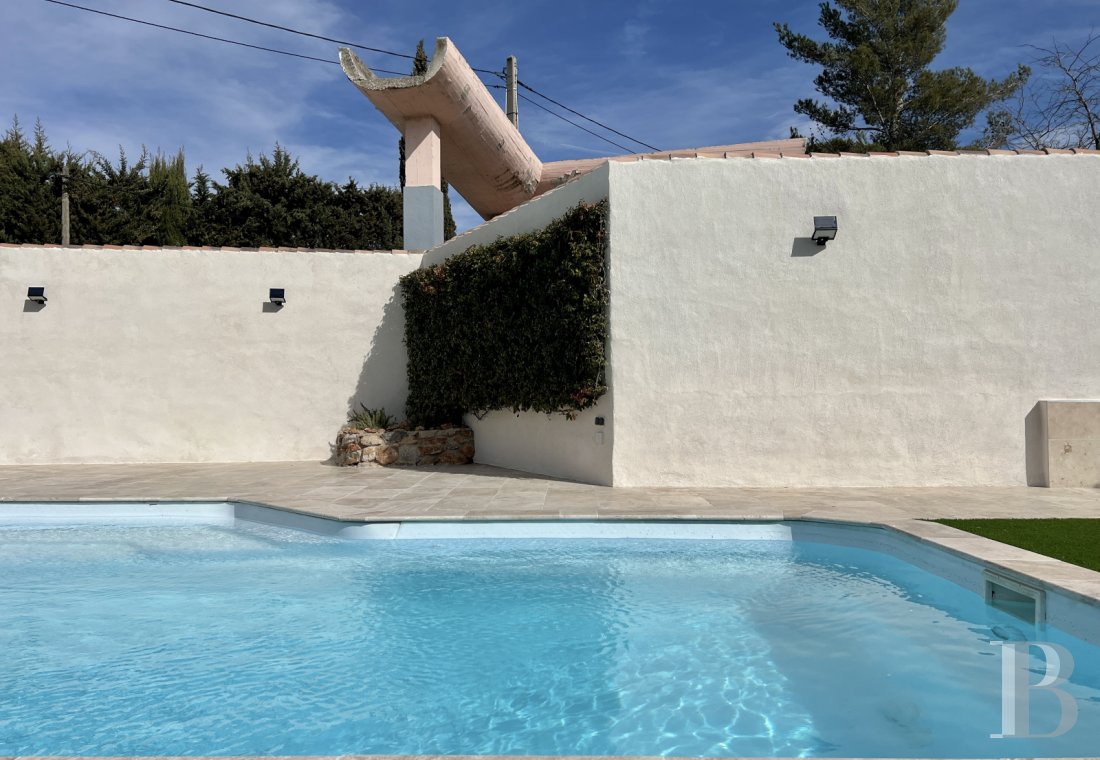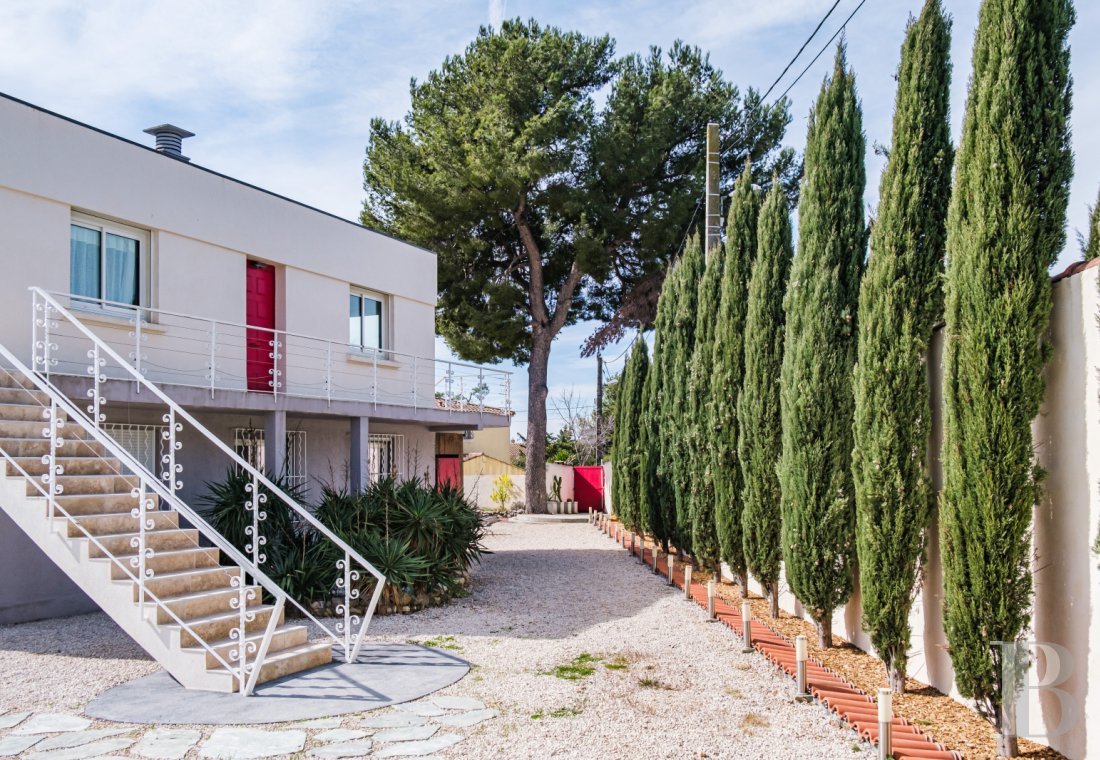enjoying absolute calm in the 12th arrondissement of Marseille

Location
Marseille, the oldest city in France, known for its creeks as well as its Old Port, was created from a group of villages, on a land that stretches from L’Estaque to Les Goudes, passing via the hills described by Marcel Pagnol. The Trois-Lucs district is located to the east of the city and became known in particular thanks to the actor Fernandel, who had acquired the Mille Roses property there. It is in this district that the villa is located; 30 minutes from the airport, 15 minutes from the station and in the immediate vicinity of shops, schools, golf courses and motorways leading to Toulon or Aix-en-Provence. The property benefits from a particularly peaceful environment.
Description
The residence is built at an angle: the living area is surrounded by a passageway that extends across a vast south-facing terrace supported by pillars. This is sheltered by a wall featuring a mashrabiya screen and can be accessed from one side by a rough concrete spiral staircase and from the other side by the passageway. Two other flights of stairs connect the passageway to the garden. The southern facade forms a horizontal line that carves out a distinctive architectural horizon in the urban landscape and firmly structures the surrounding space.
The house has two main entrances: one on the first level to the west and the other on the first floor to the north. The multiple openings, angular and without any artifice, are wide, allowing a good circulation of light.
The house
The ground floor
To the west, the first level includes a large room - a meeting room or workshop -, two spacious and very bright offices, a kitchen and a lavatory. The floors in these rooms are mainly tiled.
To the east, a separate entrance provides access to two additional rooms which could also be fitted out. A laundry and boiler room completes the ground floor.
The first floor
An outside staircase leads to the front door of the main house. A large hall painted in shimmering colours and walls lined with high glazed cabinets leads on either side to three bedrooms - two on the west side and one on the east side - two tiled bathrooms - one with a toilet - and a kitchen. The large entrance hall opens on the south side into a sitting-dining room boasting an impressive brick fireplace with generous round shapes, which contrast with the angular aesthetics of the Corbusian architecture revisited here.
The two columns at the entrance to the sitting room feature loud colours and psychedelic decorative motifs, reflecting the "seventies" spirit of the house. The glass doors lead to a vast terrace of approximately 75 m², fitted with a summer kitchen, facing south and offering an open view of the Calanques mountain range. The flooring is either terracotta, parquet or tiles depending on the room; the terrace floor is travertine.
The garden
The outdoor space is divided into two distinct parts. On the east side is a swimming area with a south-facing pool measuring approximately 9 m x 5 m and a large travertine terrace. Here, the view of a very distinctive piece of architecture, of concrete painted in terracotta and semi-tubular in shape, creates the impression of being in Chandigarh. This part of the grounds is connected on the western side to a mineral garden adapted to the southern climate, combining gravel and various Mediterranean plant species - lavender, aloe, pine, cypress, oleander, yucca, fragrant jasmine - as well as a few fruit trees - lemon trees, mandarin trees, apricot trees, among other varieties.
A large covered patio of approximately 57 m², adorned with a stained glass window featuring geometric patterns and bright colours, provides pleasant shelter from the hot summer sun; here the floor is paved with Portuguese terracotta. Finally, a parking space for two or three cars can be accessed from the property's large gate.
Our opinion
Designed by a pupil of Le Corbusier, the house as it stands could serve a variety of purposes: a dwelling for two families, a professional practice or an artist’s studio including the existing large, luminous workshop. The view of the Calanques from the terrace or from the many windows reminds us of the fact that, since its discovery by the Greeks more than 2,600 years ago, Marseille has extended from the Vieux-Port to the foot of the hills. Today, the local residents particularly appreciate the secluded neighbourhoods, which are quieter and greener than the city centre. Here, everything is within easy reach: schools, shops and access to the motorway, as well as the starting points for numerous hiking trails.
1 195 000 €
Fees at the Vendor’s expense
Reference 565789
| Land registry surface area | 1015 m2 |
| Main building surface area | 263 m2 |
| Number of bedrooms | 3 |
NB: The above information is not only the result of our visit to the property; it is also based on information provided by the current owner. It is by no means comprehensive or strictly accurate especially where surface areas and construction dates are concerned. We cannot, therefore, be held liable for any misrepresentation.

